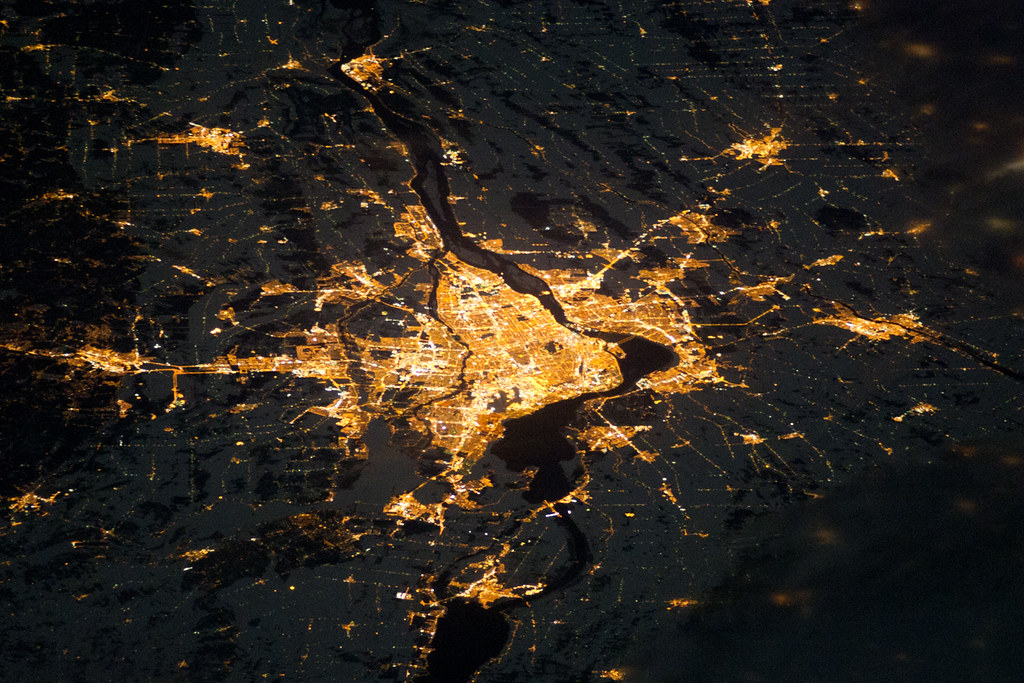
Today, NASA’s image of the day features a beautiful inclined aerial photo of Montreal and environs taken at night from the International Space Station. While aerial photos are widespread and now fail to amaze as they once did, it is still rare to see one taken at night. With a night photo, some details of how we inhabit the city and its surroundings can be seen which aren’t so obvious in similar daytime photos. We can see such things as how different types of lighting are used depending on the type of street; main roads and highways are lit by bright white lights whereas residential areas have a more yellowish, diffused colour. We can also see how more densely populated areas emit considerably more light than less dense parts of the city such as the West Island, TMR, and Longueuil, which are less brilliantly yellow. Also clearly evident is the surrounding towns that orbit the city like distant planets orbit a sun. Sorel-Tracy, Saint-Jean-sur-Richelieu, Joliette, Salaberry-de-Valleyfield, among others all seem to surround the island at nearly equal distances with smaller concentrations of light in between. It would be interesting to see if anyone can make out some constellations using the bits of light as if they were stars.
If nothing else, it’s a beautiful and unique way to look at the city that is rarely seen.
Thanks to Montreal City Weblog for the link.

3 comments
NASA’s large version of the view is even more enticing : http://earthobservatory.nasa.gov/images/imagerecords/48000/48471/ISS026-E-012474_lrg.jpg .
I love night views from planes, too. They’re geographic jewellery, and they’re organic, as the light displays the energy distribution of human lives in a varied landscape.
Can’t help reflecting, though, that light straight up is a waste of manufactured energy, prevents the ground view wonder of cooler, steadier, almost infinite stars in a dark night sky, and may be disrupting essential night migrations that have evolved to be guided by polarized starlight, and are confused by ground sources.
People are designing and making non-invasive lighting fixtures for pubic and private installation. It’s an industry worth favouring.
On balance, I’d go for dark sky lighting, light only where we need it on the ground, and more natural night ecology.
Um…could I make that “for public and private installation”, please?
it seems that the industrial areas (i.e. non-coastal area in the west island) are brightest.
it is for sure that quebec is one of the places in the world which wastes the most electricity, because it is so cheap. i.e. in montreal, streetlights and lights in parks are on all day, balcony lights are on all night, christmas lights, and so on …
selling electricity at such a low price should be considered a subvention, since otherwise it could be sold at a higher price to the neighboring states/provinces. since last year quebec had to start import electricity in the winter (at about 3-4x the price it sells it for) and that amount is projected to be rapidly growing.